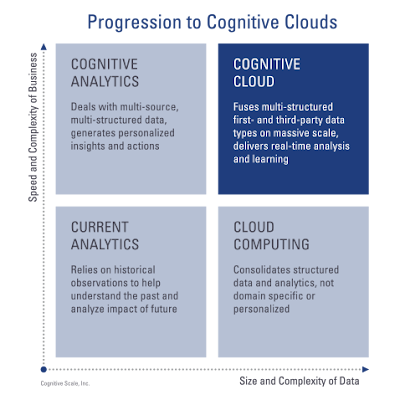Twitter Feed
The Endpoint Imperative: Global Security Compliance. Are you ready?
China has its Cybersecurity Law. Next May, the General Data Protection Regulation – or GDPR –goes into effect for the European Union. Research shows most organizations just aren’t…
The Endpoint Imperative: IT Spending: Setting Priorities in a Volatile World
Fast-evolving trends are changing the way IT thinks about security. To stay secure and productive, IT operations must excel at the fundamentals: PC refreshes for security, and optimizing end-user…
Top 1000 Tech Bloggers
The Rise “Top 1000 Tech Bloggers” leaderboard recognizes the most inspiring Tech journalists and bloggers active on social media. They use Klout scores (50%) and the blogger’s twitter conversations on…
IBM – The Power of Cloud Brokerage
Hybrid cloud adoption is now mainstream and you are making decisions every day about how to transform application and infrastructure architectures, service delivery, DevOps, production operations and governance. With Cloud…
More SMB Love Needed
In a recent post, titled “10 Surprising Facts About Cloud Computing and What It Really Is”, Zac Johnson highlighted some interesting facts about cloud computing in the SMB…
ATMs Are IT Too!
That world of homogenous IT technology managed entirely by the internal IT organization has long disappeared. Operations today require efficient and global management of technologically heterogeneous environments. The challenges and…
Digital Transformation Asset Management
Today’s businesses run in the virtual world. From virtual machines to chatbots to Bitcoin, physical has become last century’s modus operandi. Dealing with this type of change in business even…
The Game of Clouds 2017
The AWS Marketplace is growing at breakneck speed, with 40% more listings than last year! This and more insights were revealed when CloudEndure used their custom tool to quickly scan the…
Managing Your Hybrid Cloud
Photo credit: Shutterstock Runaway cloud computing cost may be causing an information technology industry crisis. Expanding requirements, extended transition schedules and misleading marketplace hype have made “Transformation” a dirty word. …
American Airlines Adopts Public Cloud Computing
Did you know that the reservations systems of the biggest carriers mostly run on a specialized IBM operating system known as Transaction Processing Facility (TPF). Designed by IBM in the…
According to the IBM Institute for Business Value the market will see a rapid adoption of initial cognitive systems. The most likely candidates have moved beyond descriptive and diagnostic, predictive and routine industry-specific capabilities. 70 percent of survey respondents are currently using advanced programmatic analytics in three or more departments. In fact, the widespread adoption of cognitive systems and artificial intelligence (AI) across various industries is expected to drive worldwide revenues from nearly US$8.0 billion in 2016 to more than US$47 billion in 2020.
The analyst firm IDC predictsthat the banking, retail, healthcare and discrete manufacturing industries will generate more than 50% of all worldwide cognitive/ AI revenues in 2016. Banking and retail will each deliver nearly US$1.5 billion, while healthcare and discrete manufacturing will deliver the greatest revenue growth over the 2016-2020 forecast period, with CAGRs of 69.3% and 61.4%, respectively. Education and process manufacturing will also experience significant growth over the forecast period.
th’s ability to replicate intuitive experiences provides a number of opportunities within sentiment analysis. With its ability to understand scenes and context, it can decipher how people are feeling based off facial expressions or voice stress levels.
- Need robust and simplified data classification processes in order to more easily deliver industry and business model specific value;
- Require the implementation of information technology security controls that are driven by data value and role based access control paradigms; and
- Leverage software applications that should be developed using ISO 27034 which is a multi-part standard on specifying, designing/selecting and implementing information security controls through a set of processes integrated throughout an organization’s Systems Development Life Cycle/s (SDLC).
( Thank you. If you enjoyed this article, get free updates by email or RSS – © Copyright Kevin L. Jackson 2016)
Cloud Computing
- CPUcoin Expands CPU/GPU Power Sharing with Cudo Ventures Enterprise Network Partnership
- CPUcoin Expands CPU/GPU Power Sharing with Cudo Ventures Enterprise Network Partnership
- Route1 Announces Q2 2019 Financial Results
- CPUcoin Expands CPU/GPU Power Sharing with Cudo Ventures Enterprise Network Partnership
- ChannelAdvisor to Present at the D.A. Davidson 18th Annual Technology Conference
Cybersecurity
- Route1 Announces Q2 2019 Financial Results
- FIRST US BANCSHARES, INC. DECLARES CASH DIVIDEND
- Business Continuity Management Planning Solution Market is Expected to Grow ~ US$ 1.6 Bn by the end of 2029 - PMR
- Atos delivers Quantum-Learning-as-a-Service to Xofia to enable artificial intelligence solutions
- New Ares IoT Botnet discovered on Android OS based Set-Top Boxes



